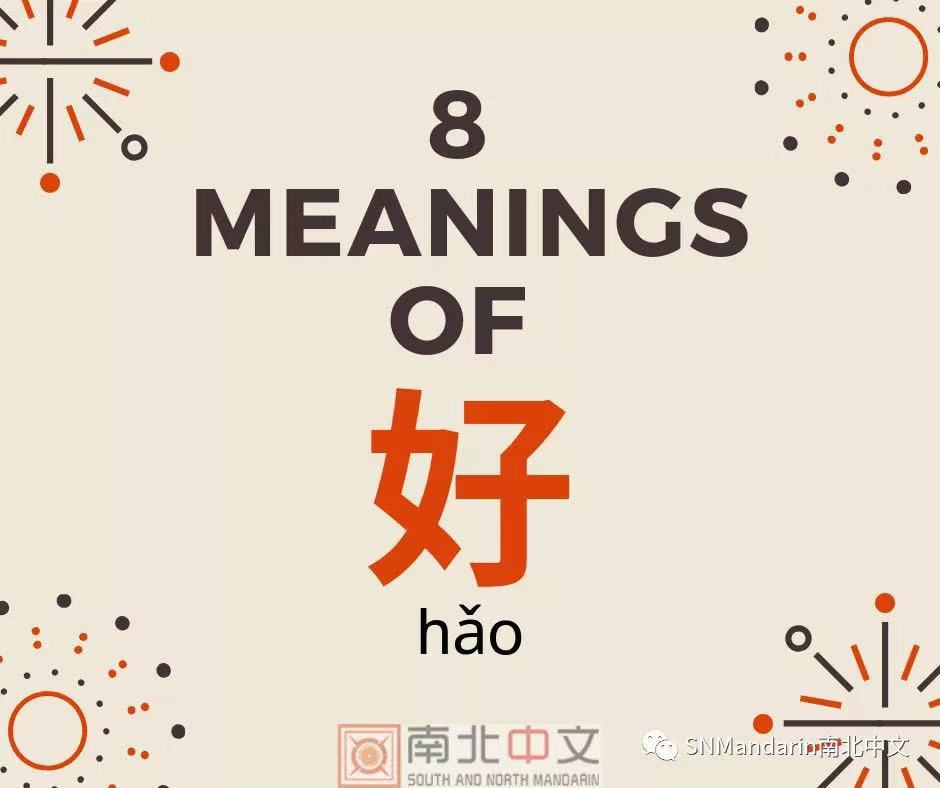My quest to learn more Chinese words is getting more exciting as I uncover more meanings to usual words, as well as an internet slang! Hǎo cool is that?
In my #ChineseChallenge Week 4, I delve deeper into the character 好 hǎo as I’ve found a terrific WeChat article explaining its different uses. But before we get to that, let’s talk about the other words, beginning with…
July 22: 改写 (ɡǎixiě, “to edit/revise”) – I have long wondered what the Chinese word for “to edit” is, and then I remembered my meeting with the lady agent of the Fangshan printing company. I asked her about getting a draft copy (样书 yànɡshūof the cookbook, so that I can edit it before printing.
July 23: 定义 (dìnɡyì, “definition”) – I read a bilingual text to test my Chinese skills. I was very amazed at how I was able to read and understand at least 60% of the Chinese text. Of course, there were new words but 定义 stood out since I wasn’t sure if the two characters were supposed to be read separately.
July 24: 复印件 (fùyìnjiàn, “photocopy”) – …And its verb, 复印件 (fùyìn) “to photocopy”. This is a basic office skill/term that we need to know!
July 25: 总体 (zǒnɡtǐ, “overall”) – I saw this word from a subway advertisement, which talks about the overall progress of China’s environmental plans. My observant eye is still no match for the snappy animations, though. However, it’s astounding to know that the Middle Kingdom is extensively promoting environmental protection.
July 26: 萌萌哒 (méngméngdā, “adorable”) – I was added to a group chat that uses this phrase. It didn’t make sense to me when I first looked it up on Pleco since 萌 means “bud” – as in plant buds or sprouts. But we know (by now?) that the Chinese lexicon is full of mystery so I dug deeper into the meaning of this adorable word… And well, according to China Daily, the word has something to do with the Japanese slang 萌え moe (pronounced as mo-eh) that refers to the cuteness of female characters in manga, anime, or video games. On Facebook, someone explained the phrase first appeared on the Douban website to refer to someone as “strange”, but its current meaning, “incredibly cute” or “adorable” exploded in popularity after the Palace Museum used gifs that showed the phrase alongside a cute image of the Yongzheng Emperor, the fifth ruler of the Qing Dynasty.

July 27: 好 (hǎo, “good”) – Hǎo are you doing? Great, you’re still with me in this part! Perhaps the first Chinese word that you have encountered is 你好 nǐ hǎo, formed by two characters that mean “you” and “good”. But as I unlock the Chinese language bit by bit, I discover that some characters have different tones and usage, depending on its location in a sentence. And 好 is a good example. Its basic meaning, “good”, is imprinted on my mind that it’s hard for me to unlearn the idea that 好 is only a one-meaning character. So when I browsed my WeChat subscription accounts, I found this indispensable resource from SN Mandarin explaining the eight meanings (what? Only eight?) of the character 好:

1. For greetings such as 你好 (nǐ hǎo, “Hello!), 早上好 (zǎoshang hǎo, “Good morning”), or 晚上好 (wǎnshàng hǎo, Good evening”)
2. Noun + 好 or adjective + 好 means “good”
Example: 他是好人 (Tā shì hǎorén) – He’s a good person
3. 好 before a verb may mean the action is “easy”
Example: 汉语好学吗?(Hànyǔ hàoxué ma?) – Is Chinese easy to learn?
4. 好 before an adjective functions as an adverb that means “very” or “so”
Example: 今天我好累 (Jīntiān wǒ hǎo lèi) – I’m so tired today.
5. 好 + 几 (hǎojǐ) functions as an adverb that denotes “a good number of”
Example: 我今天喝了好几杯咖啡 (Wǒ jīntiān hēle hǎojǐ bēi kāfēi) – I’ve drunk a couple of cups of coffee today.
6. Verb + 好 (+ 了 le) denotes the action has been completed.
Example: 你准备好了吗?(Nǐ zhǔnbèi hǎole ma?) – Are you ready yet?
7. 好 functions as a verb that means “can”
Example: 老师,请说慢一点儿,我们好做笔记 (Lǎoshī, qǐng shuō màn yīdiǎn er, wǒmen hǎo zuò bǐjì) – Teacher, please speak slow so we can take notes.
8. 好 as an affirmative interjection that means “Ok”
Example:
Person 1: 我们一起去好吗? (Wǒmen yīqǐ qù hǎo ma?) – Shall we go together?
Person 2: 好! – OK.
Anyway… moving on to our last word…
July 28: 即将 (jíjiāng, “in no time”) – I saw this on the subway platform TV as part of the announcement that the next train will be arriving. And then later when I ate dinner at a Japanese restaurant, I saw a flyer that had the same 即 character, but this time, before the character 送 (sònɡ “to give”) and 价格 (jiàɡé, “price”). I inferred that the phrase (which, by the way, is non-existent in a dictionary), meant the restaurant will give a price adjustment on something. I was so hungry that I did not bother reading the next word!
So there you have it! How’s your challenge going? We’ve just finished a month full of new words and hopefully, I remember everything that I have written here!
I guess we have to make the challenge more thematic? Oh well, it’s more exciting if we make it more random!
Photos: Chinesewithlisa via Facebook, SN Mandarin
